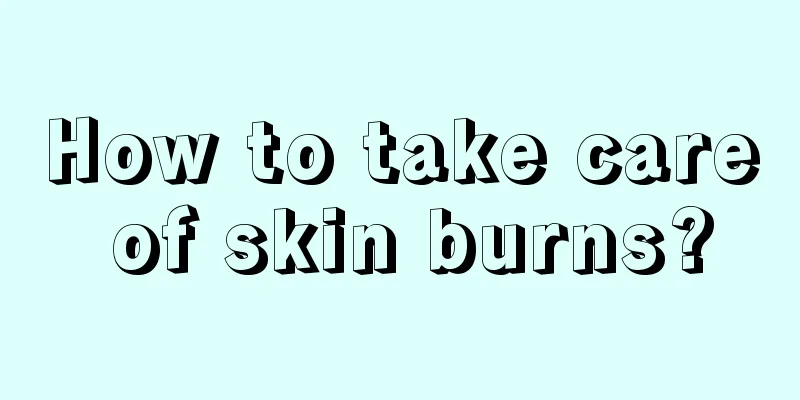What to do if you have an allergic reaction to a bee sting

|
Bees are a common insect that everyone has seen, and many people have been stung by bees. Everyone reacts differently to bee stings. For some people, the swelling will go away after a while, while for others it will last for several days. Some people who are sensitive to bee venom will even experience allergies. After an allergy, many people will worry and don’t know what to do. So, what should you do if you have an allergy after being stung by a bee? When stung by a bee, the local skin will feel pain and itching, accompanied by allergic irritation and local inflammatory reactions such as redness, swelling and heat. If a bee stinger gets into your skin, be sure to remove it. Use a sterilized needle to make a small hole in the targeted area, squeeze out the poisonous water, and then apply complex iodine. Observe closely for about half an hour. If you find that the patient has difficulty breathing, or his breathing becomes rough or there is a wheezing sound, immediately send to the nearest hospital for emergency treatment. If you are stung by a bee, since bee venom is acidic, you can use soapy water or 3% ammonia water, 5% sodium bicarbonate solution, salt water, etc. to wash the wound. If you are stung by a wasp, wash and apply vinegar. You can also wash fresh purslane and squeeze the juice to apply to the wound. If you have Nantong snake medicine (Jide Du snake medicine), you can dissolve the tablets in warm water and apply it around the wound; or you can grind Zijinzhan or Liushen Pills into powder and apply it to the affected area, which has the effects of detoxification, pain relief and swelling reduction. The folk single test prescription can be used: ① Mash garlic or ginger or apply juice to the affected area. ②Cut the fresh eggplant and apply it to the affected area; or add appropriate amount of sugar, mash it and apply it. ③ Mash fresh violet yedoensis, lobelia, dandelion, wild chrysanthemum, leek, etc. together or individually and apply to the affected area. If an allergic reaction occurs, for mild cases, you can take 1 tablet of Astemizole once a day; or 4 mg of Promethazine, 3 times a day. Those with severe symptoms should be sent to hospital for treatment as soon as possible. Precautions: After being stung by a venomous bee, applying ammonia to the affected area is basically ineffective, because the histamine in the bee venom cannot be neutralized by ammonia. Wasps are poisonous, but bees are not. After being stung by a bee, you should also remove the stinger first. The difference in treatment from wasps is that you can apply some ammonia, baking soda or soapy water to the wound. Those who are asymptomatic twenty minutes after being stung by a bee can rest assured. Cleaning: Once stung by a bee, clean the wound with warm water, soapy water, salt water or sugar water. If there is no water, fresh urine will also work. If there is any stinger left in the wound, it should be removed immediately. Apply medicine: Wanhua oil, safflower oil, green ointment, etc. You can also mash and chew ginger, garlic, purslane (a wild vegetable) and apply it to the wound. Seek medical treatment: If you experience symptoms such as headache, dizziness, nausea, vomiting, irritability, fever, etc., you should go to the hospital for treatment immediately. Allergic reaction to bee stings Each person's sensitivity to bee venom varies greatly. Some individuals are allergic to bee venom, which manifests as strong local redness and swelling at the bee sting, or severe and fatal reactions. Therefore, when bee venom is used clinically, desensitization treatment is used for allergic patients, just like penicillin. The method is to take 1 tablet each of chlorpheniramine (4 mg) and prednisone (5 mg). If there is no improvement after 4 hours, continue to take it according to the above method until the symptoms disappear. If there is no effect after 3 to 4 times, you should go to the hospital for further examination and treatment. Therefore, if there is a stinger left in the skin after being stung by a bee, it is necessary to pick it out in time. People who have allergies should act according to their own situation. If it is not too serious, they can apply ointment and wait for recovery. If it is more serious, they need to take some medicine for treatment. Some people also need to go to the hospital for timely medical treatment to prevent the situation from getting worse. |
<<: What to do if you are stung by a bee
>>: What to do if a bee stung your neck
Recommend
Early symptoms of infantile fibroids
The early symptoms of infantile fibroids are ofte...
What is the reason for red bumps on the neck due to thyroid cancer
Red bumps on the neck due to thyroid cancer may b...
How to practice the Qigong method to strengthen virility, kidney and essence
In order to strengthen yang, kidney and sperm, in...
Is nose reduction surgery painful?
Rhinoplasty is a type of plastic surgery specific...
What are the symptoms of prostate cancer in the early stages?
Cancer is the biggest culprit affecting human hea...
Is photorejuvenation effective in removing acne scars?
Having acne for a long time is very annoying. Man...
Dietary principles for advanced ovarian cancer
Female friends can all recognize the importance o...
Pituitary tumor surgery process
The pituitary gland is an important organ in the ...
What are the benefits of washing your face with rice water
Rice washing water is common, but many people don...
What is the correct method to measure whether formaldehyde exceeds the standard?
Everyone knows the many hazards of formaldehyde, ...
How many years can a person with thyroid cancer live? What is the specific survival time?
Thyroid cancer is a common endocrine tumor in cli...
What are the treatments for mid- to late-stage colorectal cancer?
Colorectal cancer is a common malignant tumor in ...
Dishes suitable for office workers to bring along
Many office workers' offices are far from hom...
How much does Guiling Xiaoliu Pills cost
Guiling Xiaoliu Pills are a medicine commonly use...
Two common methods for treating advanced ovarian cancer
Ovarian cancer is a very serious malignant tumor ...









